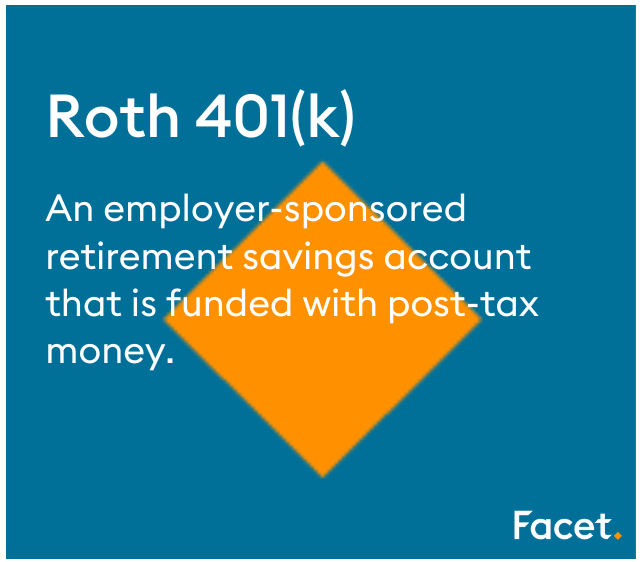
The information provided is based on the published date.
Key takeaways
- Roth 401(k)s are retirement savings accounts funded with after-tax dollars
- Employers may match contributions and deposit in a traditional 401(k), subject to income tax upon withdrawal
- Investment options include stocks, bonds, mutual funds, and exchange-traded funds (ETFs)
- Tax diversification through a mix of Roth and traditional 401(k) accounts may provide more flexibility in managing taxes during retirement
- Understanding the rules regarding early withdrawals is key to avoid penalties and preserve retirement savings
The Roth IRA is often hailed as a top retirement savings choice by personal finance experts.
But guess what? The Roth 401(k) might actually be an even better option for many individuals.
Are you overlooking the Roth 401(k) option your employer offers?
If so, you may be missing out on significant advantages compared to a Roth IRA.
This alternative might be just what you need to bolster your savings and enhance your financial flexibility.
Here’s everything you need to know about Roth 401(k)s.
What is a Roth 401(k), and how does it work?

A Roth 401(k) is a retirement savings account funded with after-tax dollars from your employer’s payroll deductions. Unlike traditional IRAs and other retirement accounts, you pay income tax on your gross income before contributing to this Roth account. The payoff comes in retirement when your withdrawals (distributions) are tax-free.
How it works
In a Roth 401(k), you pay taxes upfront, and your after-tax dollars go into the account. Retirement withdrawals are tax-free if certain conditions are met (more on that below). Like a traditional 401(k), employers can also offer matching contributions, further boosting your retirement savings and providing an additional incentive to contribute.
Tax treatment of contributions and withdrawals
One of the key differences between Roth 401(k)s and traditional 401(k)s is their tax treatment. In a Roth 401(k), contributions are made with after-tax dollars, so no upfront tax deduction is available. However, withdrawals during retirement are tax-free, provided the account has been held for at least five years, and the account owner is 59 1/2 years or older.
This tax benefit can potentially save you a significant amount in retirement, as you won’t have to pay income taxes on any qualified distribution.
Employer’s role in a Roth 401(k)
Employers play a significant role in Roth 401(k) plans. They can offer matching contributions that must be deposited in a traditional 401(k) account. This means that while your Roth 401(k) contributions grow tax-free, your employer’s matching contributions will grow in a separate account and be subject to income tax upon withdrawal during retirement.
Contribution guidelines for Roth 401(k)s

Your age and income can impact the amount you can contribute to a Roth 401(k). Familiarizing yourself with these guidelines can help you take advantage of all the benefits of the Roth 401(k) and set you up for a financially secure retirement.
Age-related considerations
In 2023, Roth 401(k) and traditional 401(k) have a combined contribution cap of $22,500. This number will increase to $23,000 in 2024. Individuals aged 50 and over can make catch-up contributions—an extra $7,500 in 2023 and 2024, respectively—allowing them to save even more for retirement.
Income limit flexibility
Unlike Roth IRAs, Roth 401(k)s do not have income limits to participate. This makes them a potentially attractive option for high-income earners who may not be eligible for Roth IRA contributions. On the other hand, if your earnings are relatively low, you are limited to contributing only your taxable income for the given year.
Withdrawal regulations
Understanding the rules and regulations governing how to withdraw money from your Roth 401(k) is important. Knowing the withdrawal regulations helps you utilize the tax-free benefits of your Roth 401(k) and avoid any possible penalties.
Understanding qualified distributions
Certain criteria must be met to make tax-free withdrawals from your Roth 401(k). These qualified distributions can be taken tax-free once the account has been held for at least five years and the individual is 59 1/2 or older. Understanding these requirements allows you to strategize your retirement withdrawals and enjoy the tax-free benefits of your Roth 401(k) savings.
Knowledge boost
What is a qualified distribution? Any withdrawal you take from a retirement plan without paying taxes or penalties. The IRS sets these conditions to deter people from using this money for non-retirement purposes.
Required minimum distributions (RMDs)
Starting in 2024, Roth 401(k) accounts will no longer be subject to required minimum distributions (RMDs). Until then, RMDs must be taken in the year the account holder reaches age 73.
Comparing Roth 401(k)s to traditional 401(k)s and other retirement accounts
Selecting the right retirement account is a pivotal decision for ensuring your financial future. Comparing Roth 401(k) plans with traditional 401(k) plans and other retirement savings options can help you make a knowledgeable choice and pick the account that best aligns with your needs and financial objectives.
Deciding between pre-tax and after-tax contributions
When choosing between Roth and traditional 401(k) plans, weighing the benefits of pre-tax and after-tax contributions is essential. Factors such as your current income level, anticipated future tax rates, and retirement goals should be considered.
A careful evaluation of tax benefits and these factors can help you make a knowledgeable choice between pre-tax contributions and after-tax contributions.
Retirement plan investment options
Investment choices within Roth 401(k) and other retirement accounts can vary but typically include the following securities:
Maximizing your Roth 401(k) benefits
Tax diversification
Diversifying your retirement savings through a mix of Roth and traditional 401(k) accounts can provide flexibility in managing taxes during retirement. This tax diversification strategy allows you to have both taxable and tax-free withdrawal options, ensuring you’re prepared for potential tax law or rate changes.
Considering tax diversification can help optimize your retirement savings and lessen your tax burden during retirement.
Anticipating future tax rates
When choosing between Roth and traditional 401(k) plans, it’s important to consider the potential impact of future tax rates on your retirement savings.
If you expect to be in a higher tax bracket during retirement, contributing to a Roth 401(k) may be more beneficial due to tax-free withdrawals. Conversely, if you anticipate a lower tax rate or bracket in retirement, a traditional 401(k) might be a better fit.
A careful assessment of these factors will assist you in making the right decision for your financial future.
Can you lose money in a Roth 401(k)?
Risk is a natural part of investing; Roth 401(k) plans are no exception. Knowing the risks linked with Roth 401(k) investments, like market fluctuations and early withdrawal penalties, can assist you in making informed decisions and lessen the potential impact on your retirement savings.
Market fluctuations
Market fluctuations can have a significant impact on the value of your Roth 401(k) account. Economic changes and unforeseen events can lead to fluctuations in the stock market, affecting your investments.
To safeguard your Roth 401(k) from market volatility, diversifying your investments across different asset classes and regularly rebalancing your portfolio to maintain your desired asset allocation is critical.
The cost of early withdrawals
Early withdrawals from a Roth 401(k) can result in penalties and taxes, reducing the contribution limit and amount of available retirement funds.
Barring specific IRS exceptions, a 10% penalty is applied to early withdrawals (before 59 1/2), in addition to taxes on any earnings generated from the contributions.
Understanding the rules and potential costs of early withdrawals can help you avoid these penalties and preserve your retirement savings.
Final word
Choosing the right retirement account is a critical decision that can significantly impact your financial future. A Roth 401(k) offers unique advantages that can help you optimize your retirement savings and build toward a comfortable retirement.
By understanding the key differences between Roth and traditional 401(k) plans, contribution guidelines, withdrawal regulations, and potential risks, you can make informed decisions that will set you on the path to financial success.
Facet
Facet Wealth, Inc. (“Facet”) is an SEC registered investment adviser headquartered in Baltimore, Maryland. This is not an offer to sell securities or the solicitation of an offer to purchase securities. This is not investment, financial, legal, or tax advice. Past performance is not a guarantee of future performance.


